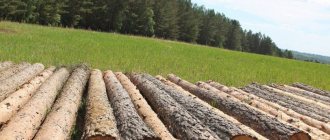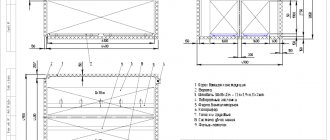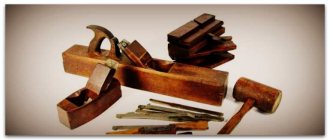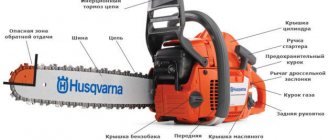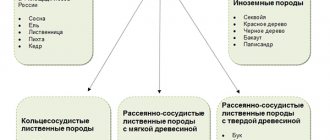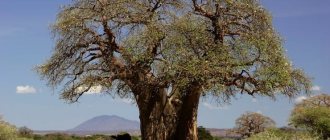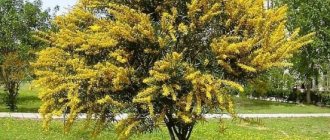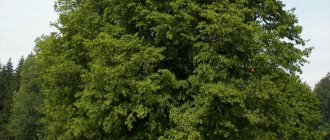The forest area is one of the richest resources in Russia, which is confirmed by the high volumes of its exports. By the way, products manufactured from these raw materials rank seventh in the industrial sector. The process of manufacturing products of this kind begins with logging - this is a key sector of the national economy, providing for an extensive range of technological and organizational measures.
Preparation for organizing logging
At the first stage of organizing logging, a project is developed with tasks and resources that can be spent at the stage of its implementation. Next, in accordance with the objectives, the area for deforestation is selected. Areas for logging are called lumberyards, allotments, plots and cutting areas. In essence, this is an area of forest where, at a minimum, trees must be cut down. If we are talking specifically about industrial harvesting, then the site is selected at a distance from populated areas. In some cases, conditions are also set for selecting a site of an environmental nature - for example, based on distance from polluting enterprises, landfills or landfills with household waste. But in this context, it should be taken into account that logging is not necessarily a site for cutting down trees for further production needs. These may also be areas cleared for economic reasons. For example, if it is necessary to thin out an array of young growth and dead wood.
Industrial logging technology
At the selected site for the plot, infrastructure for full-fledged timber harvesting is organized. What does it include? At a minimum, special areas for storing materials and clear paths for their transportation should be provided. Modern woodcutters also provide conditions for basic processing of logs. These are machines on which trees are removed from knots, cut into pieces of the required length and, in some cases, cleared of bark. Further, the logging technology involves storing, drying and rejecting the material. Depending on conditions and logistics requirements, sometimes it makes more sense to transport unprocessed logs. The costs of moving a heavier resource can be justified, since the quality of processing in specialized conditions at the target enterprise, as a rule, exceeds the level of technological support for similar tasks directly at logging.
Technologies and equipment for logging
In Russia, timber harvesting is carried out mainly by three methods: timber harvesting , timber harvesting and tree harvesting . The choice of technique used depends on the method. For your convenience, we have selected the optimal technical solutions for each harvesting method.
► Currently, the share of tree harvesting in the total volume of fellings is approximately 50%, the share of cut-to-length harvesting is 30%, and log harvesting accounts for 20%. In the North-West of Russia, the share of the assortment harvesting method reaches 90%, which is due to the proximity of Finland and the small size of the plots.
1. Cut-to-length (Scandinavian) procurement technology
Technology: felling, delimbing, bucking the trunk to a given size with a harvester , subsequent transportation by forwarders .
, one forwarder per harvester ; with a hauling length of 700-800 meters, two forwarders .
Despite the growing popularity of this method in Russia, its implementation is not always justified, since it requires the fulfillment of many conditions for profitability:
- it is necessary to purchase low-loader trawls for transporting equipment between plots; the hydrostatic transmission of the machines is not intended for hauls over 2 km;
- highly qualified operators are required;
- equipment requires significant capital investments (repairs, spare parts and service are expensive and cause equipment downtime).
The delivery time for spare parts for all leading brands (John Deere, Komatsu, Ponsse) averages from 3 to 7 days, and in 5-10% of cases - from 14 to 50 days. For models older than 10 years, spare parts warehouses are not maintained, and they are mainly supplied to order. The quality of the machines and the efficiency of the service are significantly exaggerated; there are a large number of equipment failures even during the warranty period.
The efficiency of cut-to-length technology can be increased by 30-40% if thinnings are used in advance. It is necessary to take into account the swampiness of the plots; often a light forwarder with a capacity of 10 tons Gremo or a Belarus tractor with a skidding cart can transport a larger volume than a 14-ton forwarder logs in it .
► The average productivity of a harvester in the North-West of Russia (according to a study by the Finnish Melta Institute) is 10.7 m3 per machine hour (data taken based on an analysis of the work of 38 harvesters operating in 6 regions of Russia), on average the new complex harvests per month from 2000 to 4000 m3 of wood. The cost of cut-to-length billets ranges from 450 to 750 rubles per m3, depending on the financial burden (leasing).
In many regions, harvesting with a harvester - an excavator - is widely used. This option is attractive because it requires less capital investment. The use of excavators is only possible in clear cuttings with slopes of up to 15%.
For cut-to-length (Scandinavian) procurement technology, our company offers:
- Gremo harvesters and forwarders are highly reliable machines designed for wetlands and mountainous terrain. Particularly in the Swiss mountains, harvesting is carried out mainly using Gremo machines.
- Harvesters based on Hitachi, Komatsu, LP-19B excavators with SP Maskiner heads (made in Sweden) and skidding carts. The cost of the complex ranges from 10 to 13 million rubles.
- Light harvesters and forwarders with a capacity of up to 7.5 tons Entracon . The purchase of these machines is advisable for small volumes of harvesting, for thinning.
If an enterprise is experiencing a shortage of funds, it is better to purchase new equipment with a capacity of 7.5 tons and have a stable volume of workpieces than to purchase a used forwarder of 14 tons and invest money in its repair. forwarder equipped with a Hypro FG-45 felling head and a Hypro 755 processor can also be used for thinning .
SP Maskiner harvester heads harvesters for the first time, Swedes prefer SP 561 LF heads . Low weight of the head and the possibility of gentle operation of the harvester , high reliability, productivity, ease of maintenance - all these are distinctive features of SP Maskiner . SP Maskiner heads on absolutely all brands of harvesters , and this is the best proof of their quality, reliability and performance.
We present to your attention a video dedicated to this topic on Youtube:
Lightweight Doosan 140 R harvester with SP 561 LF head
Hitachi ZX 200 with SP 861 LF head
Valmet 901 with SP 561 LF
Timberjack 1270C with SP 561 LF
Caterpiller 550 with SP 551 LF head
EcoLog with head SP 451 LF
Gremo 1050H with SP 561 LF
Most of these brands have their own harvester heads, but consumers are replacing them with SP Maskiner heads.
2. Whiplash harvesting technology
Technology: manual felling and separation of branches, skidding in logs using a TDT-55, TLT-100, TT-4 tractor to the upper warehouse, where the logs are cross-cut by hand. The resulting assortments are stacked with the tractor's blade.
► One tractor and a team of 4 people harvest an average of 1000 m3 per month, the cost of harvesting is 250-300 rubles per m3. Heavy manual labor and low productivity make this technology unattractive, and it often involves rotating teams of workers.
For whip billets, our company offers:
- For skidding tractors - Hypro 755 processors , which allow mechanizing the most labor-intensive operations - delimbing and bucking.
Hypro 755VB processor model can be installed on a forwarder, skidder, timber truck, or trailer.
Video on this topic on YouTube:
3. Harvesting in trees
Technology: felling is carried out by a feller buncher LP 19 B or John Deere, skidding is carried out by two skidders a processor is used to separate branches and cross-cut .
► According to the Finnish Forest Institute Melta, tree harvesting is a more productive method than cut-to-length technology . This technology is the main one in Canada and the USA.
The complex of machines allows harvesting from 8,000 to 12,000 m3 per month, the cost of harvesting ranges from 200 to 250 rubles. Logging residues and deciduous trees can be processed into fuel chips for subsequent removal and sale; the wood chips market is growing very quickly.
For tree harvesting, our company offers:
- The feller buncher LP-19B , it has a comfortable cabin with air conditioning, imported hydraulics and components make it quite reliable with low operating costs. Skidding is carried out XTA 200 skidders Belarus skidders skidders , or Czech skidders .
- Excavator-based processors with SP-561 LF heads.
- Hypro 755 processors for medium forest and SP 861 LF for large ones. The SP 861 LF processing head is designed specifically for excavators, has the option of extended processor knives for quickly picking up the trunk from a stack, and the option of a top saw for trimming the tip.
- The option of manual felling, skidding with skidders XTA 200, Belarus 92P with half-track, LKT (81/82) with subsequent processing of trees with a Hypro 755 processor . The complex provides 2000-3000 m3 of workpiece with low initial investments and low cost of workpiece.
- An option for mechanized felling is possible - skidder LKT 81/82 , or Entracon with a manipulator and felling head, and the Hypro 755 processor allow you to completely mechanize the workpiece.
In Germany and Sweden, there is a practice of converting a conventional forwarder into a skidder ; for this purpose, the bunks are removed and a grab grip is installed on the rear semi-frame of the machine.
To mulch logging residues into fuel chips, it is proposed to use mulchers from the leading company FAE based on Belarus or XTA tractors with a front bucket for loading chips. The production of fuel chips in Russia will become one of the actively developing areas in the coming years.
4. Other auxiliary logging technologies
- Trejon and Hypro attachments allow you to mechanize the clearing of bushes from power lines, the sides of public roads or railway tracks.
- FAE mulchers , in addition to rotary shredding of bushes, can penetrate deep into the soil to break the root system; Trejon chain tractor brush cutters effectively cultivate soil with a large number of protruding stones.
- Hypro processors on MTZ-82 are the most inexpensive and effective solution for clearing (removing) burnt forest, logging, windfall, or when expanding the strip of power lines. The presence of a winch allows you to perform work in accordance with safety requirements in the security zone of power lines.
- Grab grabs with a saw mechanism or FG-45 felling heads will allow you to mechanize the felling and dismantling of tree debris. Felling heads can be used in urban environments for sawing and clearing complex trees at height.
- One of the new FAE in the construction of unpaved roads in Europe is crushing the road surface and impregnating it with a polymer composition, followed by compaction with road rollers. The technology makes it possible to obtain a hard, level dirt road with a long service life.
- Russia has adopted a new standard for the width of power line clearings. To carry out this work, we can offer you various sets of machines, for example, a lightweight Hitachi ZX130 excavator with an FG-45 felling head with a telescopic boom extension for felling, a Hypro 755 processor on a Zetor or Belarus for bucking and separating branches, an FAE mulcher on a tractor- HTA 200 for grinding logging residues.
Equipment used
From a technical point of view, logging is a labor-intensive process that requires large resource costs. If previously felling of trees was carried out with an ordinary saw and an ax, today the simplest arsenal of a woodcutter consists of gasoline and electric chain saws, and high-tech enterprises use computerized harvesters and machines for laying logs. In both cases, the role of man remains significant as the organizer of the entire felling process. The foreman determines the cutting parameters, its direction and the pace of logging. The forest falls in the direction opposite to the side where the main equipment is located. This point is determined before the start of the cut, since the choice of the fall location should also be based on the requirements for the conditions for further processing of the wood. At the next stage, a group of loppers is used to clean the log. In this operation, chain saws can also be used, and for mechanized processing, harvesters (forest harvesters). Logs are moved around the work site by a forwarder (tractor-loader).
In the balance is productivity.
In the process of scientific research, a group of scientists working in the North-West region found that the highest productivity is characterized by the mechanized harvesting technology of whole trees, and the lowest by the mechanized harvesting technology. At the same time, it is precisely with the use of mechanized tree technology that the greatest dispersion of productivity is observed among enterprises, which is caused by insufficiently effective planning for the organization of logging operations, interruptions while waiting for the relocation of equipment from plot to plot, and long periods of repair work due to an insufficiently developed technical service system for the machine system operating on this technology. The smallest range is observed in the mechanized whiplash technology, which is due to the traditional nature of its use and the lack of reserves for increasing productivity. The productivity of cut-to-length mechanized technology is higher than that of cut-to-length mechanized technology, which has the largest production range.
At logging sites, all expenses for performing logging operations in the production of round timber in each period are made up of current expenses and part of one-time expenses attributed to the products manufactured in a given period. As part of the study, the structure of direct operating costs takes into account only direct costs specifically for the harvesting of round timber and does not take into account the costs of preparation of production, purchased wood, as well as the share of general management costs traditionally attributed to direct costs. In other words, only those costs that are formed from the “stump” to the upper warehouse are taken into account: wages with deductions for production workers, depreciation of used machines and mechanisms, costs of fuel and lubricants, costs of maintenance and repair, other costs, including leasing forestry machines and mechanisms (as well as wear and tear of the machine, rubber, costs for cables, blocks, etc.). That is, only a narrow range of direct costs per unit of work (rub./m3). The lowest unit costs are shown by mechanical and mechanized technologies for harvesting trees, which is caused by their high productivity. At the same time, the range of costs for enterprises changes slightly. At the same time, the highest level of costs is typical for mechanized and mechanized cut-to-length technologies, but subject to competent organization of logging operations and high equipment productivity, they can have lower cost indicators compared to other logging methods.
Analysis by technical and economic factors allows us to estimate the minimum level of round timber production, which ensures break-even use of the machine system.
Assessing the cost structure based on technical and economic factors, researchers argue that the highest fixed costs are characteristic of cut-to-length mechanized technology. The main reason is that the average age of the equipment used is negligible, and most often this system of machines is purchased through leasing, which significantly increases costs in the first 3-5 years of using the equipment due to increased depreciation (up to 40% in the cost structure). Mechanized cut-to-length technology also provides an acceptable level of costs, with fixed costs accounting for 16%, since this technology uses fewer units of equipment, and variable costs are mainly formed by labor costs with deductions and material costs. The structure of unit costs for the harvesting of timber using mechanized log technology is as follows: 16% are fixed costs and 84% are variable, which also mainly consist of labor costs with deductions and material costs. Costs for traditional mechanized whiplash technology (86% are variable, 14% are constant) are also mainly formed due to labor costs and material costs, and due to the high wear and tear of the equipment used, the amount of depreciation charges for this technology is less than for others technologies. The traditional version of the technological process, which includes, in addition to a complex of logging operations and removal, also lower warehouse work, has a negative impact on the level of production costs. Considering the high cost of the equipment used, its high degree of wear and tear and low utilization rate, we can say that these technologies are more expensive compared to other technologies. While cut-to-length technology makes it possible to obtain finished products almost in the upper warehouse, the long-length technology and the tree technology include, in addition to a complex of logging operations and removal, also lower warehouse work, so these technologies have far from a positive impact on the economy of the enterprise.
Use of logging materials
Harvested logs can be used for a variety of purposes. As a rule, possibilities for future use of raw materials are taken into account even at the stage of a logging project. The nature of primary processing at logging in accordance with customer requirements will depend on this. Among the main types of products in the manufacture of which raw materials from logging sites are used, the following can be distinguished:
- Construction lumber. Logs, boards, beams, beams, veneer, slats, etc. Materials undergo not only mechanical molding to certain parameters, but also thermal and sometimes chemical processing processes in order to give the product the necessary performance qualities.
- Pulp and paper products. One of the largest segments of the timber industry, requiring more precise and subtle processing processes for blanks to produce paper, cardboard, cellulose, etc.
- Furniture industry. Another major area in which timber products from different stages of processing are used. With technological development, the requirements for the raw materials used are also increasing.
- Pellet production. A relatively new and still emerging industry in Russia, which mostly uses logging waste. Pellets are an environmentally friendly biofuel that is obtained by pressing and molding recycled sawdust and bark.
Forest formations in terms of technologies
In general, logging technology includes: a complex of logging operations, timber storage (at an intermediate timber loading site, upper warehouse) work, and transportation of timber.
The assortment technology is characterized by the following technological operations: felling trees, clearing trunks from branches and bucking logs at the “stump” into logs, loading logs onto a forwarder and subsequent skidding in a fully submerged position to an intermediate timber loading area or upper warehouse, unloading work, sorting logs by separate stacks, loading logs onto timber transport vehicles and transporting them to the consumer.
The log technology, in contrast to the cut-to-length technology, involves felling trees and then clearing them of branches at the “stump”, resulting in logs that are then skidded to the timber loading area. There they are stacked, and then loaded onto logging road trains and transported to the lower warehouse or site of a timber processing enterprise, where the wood is unloaded and supplied for processing and bucking into assortments for a specific purpose. At the lower warehouse, additional assortments are formed into stacks and loaded onto vehicles for delivery to consumers. Branches and waste are processed into fuel or process chips.
In scientific circles, when assessing the effectiveness of logging methods, a multifaceted judgment can be traced to this day, not devoid of meaningful analysis.
“As you know, the forests of the Scandinavian countries are distinguished by the fact that most of them have undergone thinning in a timely manner and, due to the full development of the planned cutting area, there are practically no overmature forests in them. In such forests, even-aged stands grow, in which all the trees are approximately the same size and quality. When developing such forests, the performance of the harvester-forwarder machine system reaches the highest levels.
As for our forests, it should be noted that when developing the estimated logging area for decades at the level of 20-30%, we have to develop overmature forests in which no thinning has been carried out.
In our conditions, the harvester-forwarder system, with rare exceptions (when working in forests), will never work as efficiently as in Sweden or Finland. That is why this system of machines is not dominant in Canada and the USA, where the forests are as unkempt as ours,” said Valery Sukhanov, Doctor of Technical Sciences, General Director of State Scientific Center LPCTE LLC.
When considering the effectiveness of harvesting methods through the prism of productivity, it should be noted that the production program of a logging enterprise should be completed with the least need for basic production mechanisms, therefore the main indicator of their use is shift productivity. The number of machine shifts to complete the production program, that is, the need for mechanisms, depends on this indicator. The higher the shift productivity, the less machine shifts, and hence the fewer mechanisms, are required. In addition, based on this productivity, a general indicator of the use of basic mechanisms is calculated - output per listed unit of equipment.
Karelian scientists have developed a slightly different point of view regarding the effectiveness of modern logging technologies. In the scientific research project “Logging and logistics in Russia - focus on scientific research and business opportunities” they Fr.
The opinions of colleagues in the scientific workshop were divided, and over time, the controversy around technologies and the logging arsenal was not only fueled by new thoughts, but also acquired new facts.
The main parameters to be assessed, for example, in the North-West region were the annual volume of harvesting and productivity in logging operations for the main logging operations. As part of the study, the average output per machine shift was determined using several technologies.
Logging as a type of business
The logging process should be considered as a direction of entrepreneurial activity associated with cutting down, skidding and processing of timber. Such activities can only be carried out within the boundaries of one’s own property – in the economic zone. Moreover, it is not always possible to even obtain ownership of such plots due to existing restrictions from regulatory documents on the protection of natural resources. The fact is that logging is not only an activity aimed at making a profit, but also a reduction in one of the country’s natural resources. On the other hand, this industry also has advantages for the state of forestry as a whole. For example, spot cutting stimulates the natural process of renewal and reforestation with economically beneficial use of trees.
Forest Fund of Russia
In this case, the fund means the entire set of forest resources, as well as industrial facilities, one way or another related to the harvesting and processing of trees. About 1/4 of the world's forest reserves are concentrated in Russia, which in area corresponds to 45% of the country's territory. As for the composition of forest-forming species, which are, in principle, suitable for harvesting, they mainly include conifers - cedar, pine, spruce, etc. The composition of the stock is heterogeneous in terms of intended purpose. In Russia, forestry and logging are focused primarily on the needs of industrial harvesting and further chemical-mechanical processing. However, the general structure of the fund also consists of field protection, protected, recreational and water protection forests. Such tracts are not used for industrial needs, but logging techniques can also be applied to them, only for other purposes of maintaining the economy.
Meaning of the word logging
Examples of the use of the word logging in literature.
On the very night when my barn was robbed, Vasya was at the logging site.
The Farm had its own small lumber mill, and when weather conditions prevented the prisoners from logging, everyone worked either in the factory or in the sawmill, for example, collecting and pressing wood chips, bark and sawdust into briquettes of various shapes, as well as extracting resin from the needles of torus trees, used in the production of plastics.
So I worked in logging, rafting, at the Bazai wood factory, and my pension first came out to forty-eight rubles, then an increase, and for a long time I received fifty-four.
The majority went to logging, timber rafting, a flax mill and a starch factory that were newly created across the Sysola River, and to study in the city.
If he had not been firm in other things, if he had not brought order to the horse rental station, the manager of which was accustomed to taking bribes for horses, and at the creamery, where the percentage of fat content of milk was arbitrarily determined, if he had not demanded justice when establishing standards for grain and timber harvesting, then his song in Ruikvere it would soon be sung.
The idea was to enlist in logging and at the same time look for a hole in the border.
He was, apparently, so ill that he was not taken away to logging, but was left at the camp as a clerk in the economic department.
Those able to work were driven away to logging and sent to collective farms, mainly for work related to horses.
The first years, of course, did not yield much, but taking into account their vegetable garden and winter logging work, people did not live richly, but they did not starve.
They had bread, caught fish, hunted upland game and ducks, and with money received from logging in winter and rafting timber in spring, they bought sugar, confectionery, fabrics, clothes, etc. in general stores.
It seems to me that he understood the catastrophic situation not only with supplies, but also with logging and rafting in connection with this situation in the supply of workers.
Boyan was the first to use the mechanism of camp cronyism to rescue me from logging and calmed down only when I was completely cured and safely settled.
Some were in concentration camps, others worked on collective farms and logging or on road work, were in free exile, others were in the so-called construction battalions, and some were in the ranks of the Red Army.
In one night, the logging station moved from the autumn logging season to the winter one, and, as it always happens for some reason, winter took us by surprise; two or three days were not enough to properly prepare for it.
I finished the educational program at the logging site, read through the warehouses, wrote in capital letters, each would be the size of a cigarette.
Source: Maxim Moshkov library
Logging regions in the Russian Federation
Most of the operating enterprises are located in the Siberian and Northwestern parts of the country. Recently, there has been a displacement of small companies due to a decrease in the share of suitable wood, so the points of new production in projects are already oriented towards the development of the massif in productive areas of the North-East. Selective logging based on traditional methods with non-motorized tools dominates in the Southern and North Caucasus districts. A number of projects are also planned at the facilities of existing enterprises in the Irkutsk region. As part of the pilot campaigns, it is planned to increase the intensification of forest reproduction, which should increase the volume of harvesting wood raw materials in the future.
Timber harvesting volumes in the Russian Federation
The production volumes of timber processing enterprises are heterogeneous and depend on many factors - from the level of local infrastructure to the technological nuances of organizing work. Nevertheless, thanks to investment projects, the total figure has been increasing in recent years. In particular, the annual average volume of logging is about 200 million m3. Over 80% of this timber comes from production facilities located on leased territories. The annual increase in volume is explained by the fact that most investment projects are aimed at modernizing the capacity of the technical base, which steadily increases the efficiency of enterprises.
Development of logging in the Russian Federation
In the development of investment projects and business plans for organizing timber processing enterprises, questions about increasing the energy efficiency of production and optimizing technological processes are increasingly being raised. Based on timber harvesting, a systematic transition is being made to more intensive models of use and reproduction of plantings. These and other measures in the future will help achieve sufficient optimization of the production sector, which will allow, with minimal power and energy costs, to produce the established calculated volume of raw materials and at the same time ensure stable reproduction of working arrays.
Canons of efficiency on the porch of reality
Sustainable, cost-effective development of the forestry sector is inextricably linked with the selection and justification of the most optimal logging technologies, adapted to the specific natural production conditions of forest areas. Today, logging enterprises, when planning the economic efficiency of wood production, consider the “result-cost” criteria as the main one, focusing on minimizing the cost part, which is reflected in profit as the basis of efficiency. At the same time, the cost part cannot be the final condition, since when choosing a logging technology, it is important to take into account other quite important factors that affect economic efficiency. Among them are the productivity of the used systems of machines and mechanisms, the quality of the harvested wood, and the environmental consequences of using these technologies and equipment. Moreover, all these factors must be implemented in conditions of break-even logging activities. Therefore, when assessing the effectiveness of applied logging technologies, they are considered comprehensively. Of course, these factors are interconnected and influence each other. For example, a study of a number of enterprises and an assessment of efficiency based on these factors allowed many scientists to substantiate the economic efficiency of using forestry machine systems and their areas of application.
To get a complete picture, scientists conducted research into the sector of logging enterprises that provide volumes of wood harvesting both in individual regions and within the state. In almost every case, the enterprises under consideration used all the main types of logging technologies: logging with trees, logs and logs. And the distribution of logging volumes using these technologies throughout the country still remains uneven.
Lumber technology and tree harvesting have been traditionally used by timber industry enterprises since the 1950s. Assortment technology in its modern form has been gradually introduced by enterprises since the early 1990s. Initially, it was built primarily on the use of the labor of forest fellers with imported chainsaws and a self-loading log truck. Subsequently, the technology developed along the path of mechanization, that is, it was based on the use of a complex of forestry machines (felling-delimbing-crossing machine or harvester + forwarder). The share of cut-to-length technology has begun to grow significantly since 2000.
